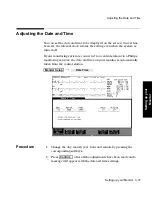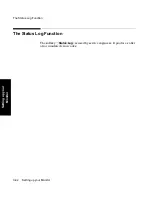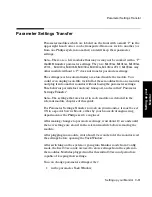
Changing the Patient Category
Setting up your Monitor 3-51
S
e
tt
ing up y
our
M
onit
o
r
Heart Rate
(HR) / Pulse
The expected range can be estimated by performing a manual pulse
count.
RESP
In general, use the Adult or Pediatric category if rates below 50 rpm are
expected; use Neonatal if expected rate is above 100.
Pressure
The algorithm responsible for respiration artifact suppression is used in
all three patient categories for the 10 and 30 scales. In the Pediatric and
Adult categories, the algorithm is also used for the 60 scale.
SpO
2
Default for averaging time is 10 seconds for Adult, Pedi and Neo.
Note—
Default can be changed in Configuration Mode.
Adult (bpm)
Pedi/Neo (bpm)
Cardiotach Range
15 to 300
15 to 350
HR Alarm Limit Range
15 to 250
15 to 300
Pleth/Pressure Pulse Alarm Limit
Range
30 to 250
30 to 300
Adult/Pedi (rpm)
Neo (rpm)
Respirotach Range
0 to 120
0 to 180
High Alarm Limit Range 10 to 100
30 to 150
Low Alarm Limit Range
0 to 95
0 to 145
Summary of Contents for M1165
Page 12: ...Responsibility of the Manufacturer xii ...
Page 62: ...Using an ITE Display 1 40 The CMS and V24 and V26 Patient Monitors ...
Page 74: ...Attaching the Patient 2 12 Getting Started Getting Started ...
Page 172: ...Alarm Setup 5 16 Alarm Functions Alarm Functions ...
Page 228: ...Loading Paper 6 56 Recording Functions ...
Page 236: ...Admitting a Patient 7 8 Admit Discharge End Case Admit Discharge End Case OR Mode ...
Page 238: ...Admitting a Patient 7 10 Admit Discharge End Case Admit Discharge End Case endcase tif ...
Page 274: ...Drug Calculator 8 36 Trends and Calculations Trends and Calculations ...
Page 299: ...Data Transfer Module Data Transfer 10 3 Data Transfer M1235A CTS DTM CMS CMS V24 V26 ...
Page 388: ...Performance Assurance Checks 13 22 Maintenance Maintenance ...
















































